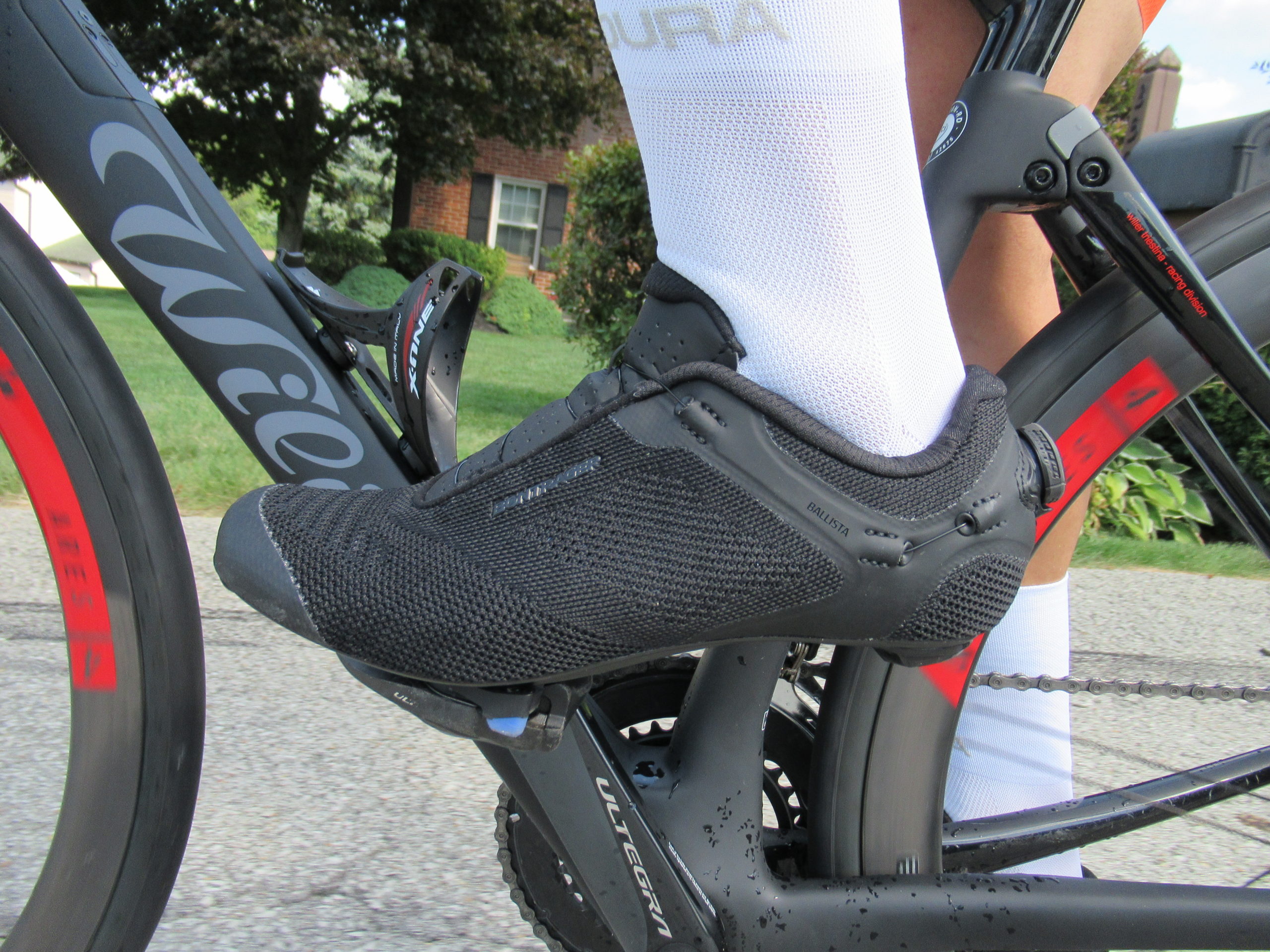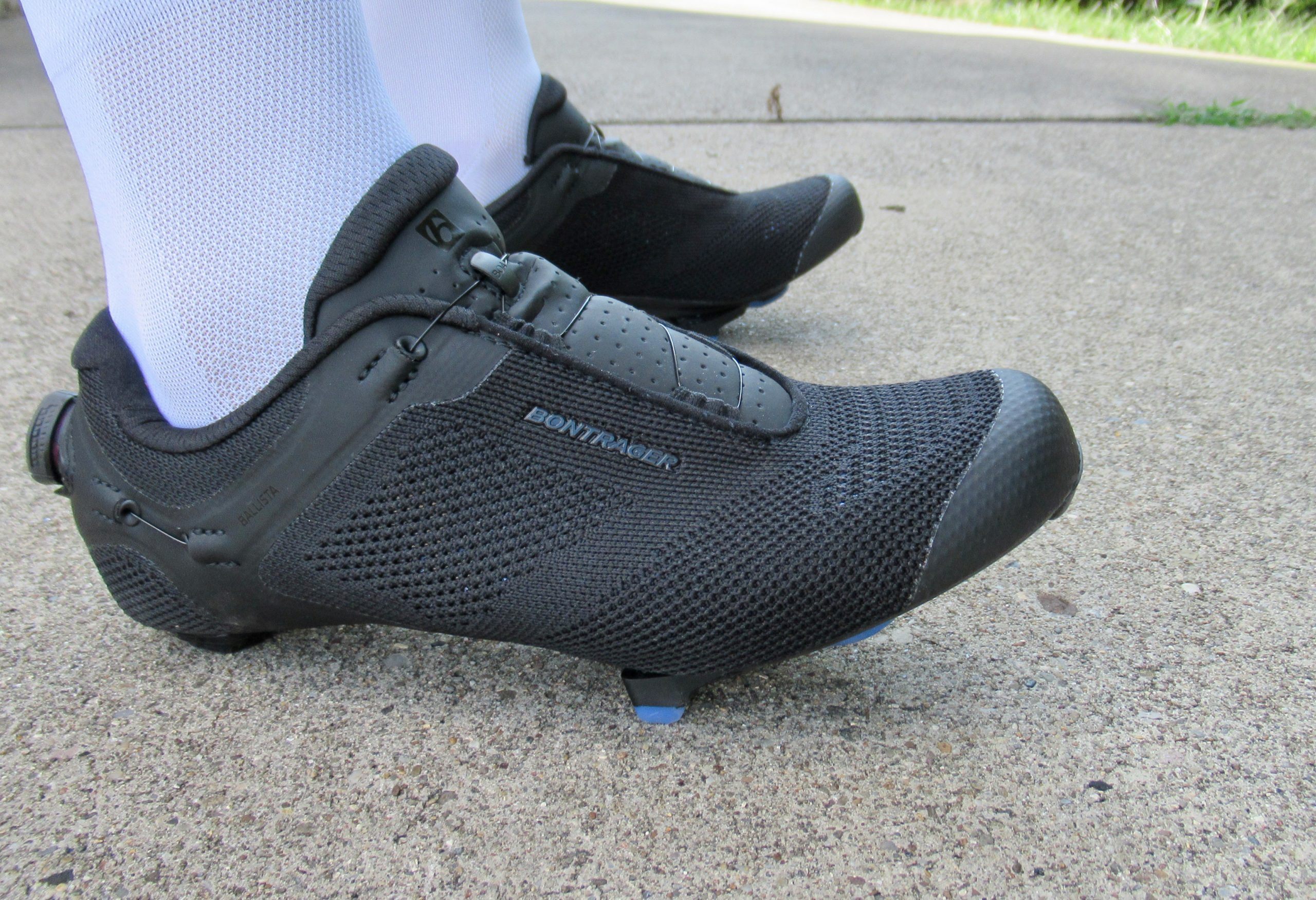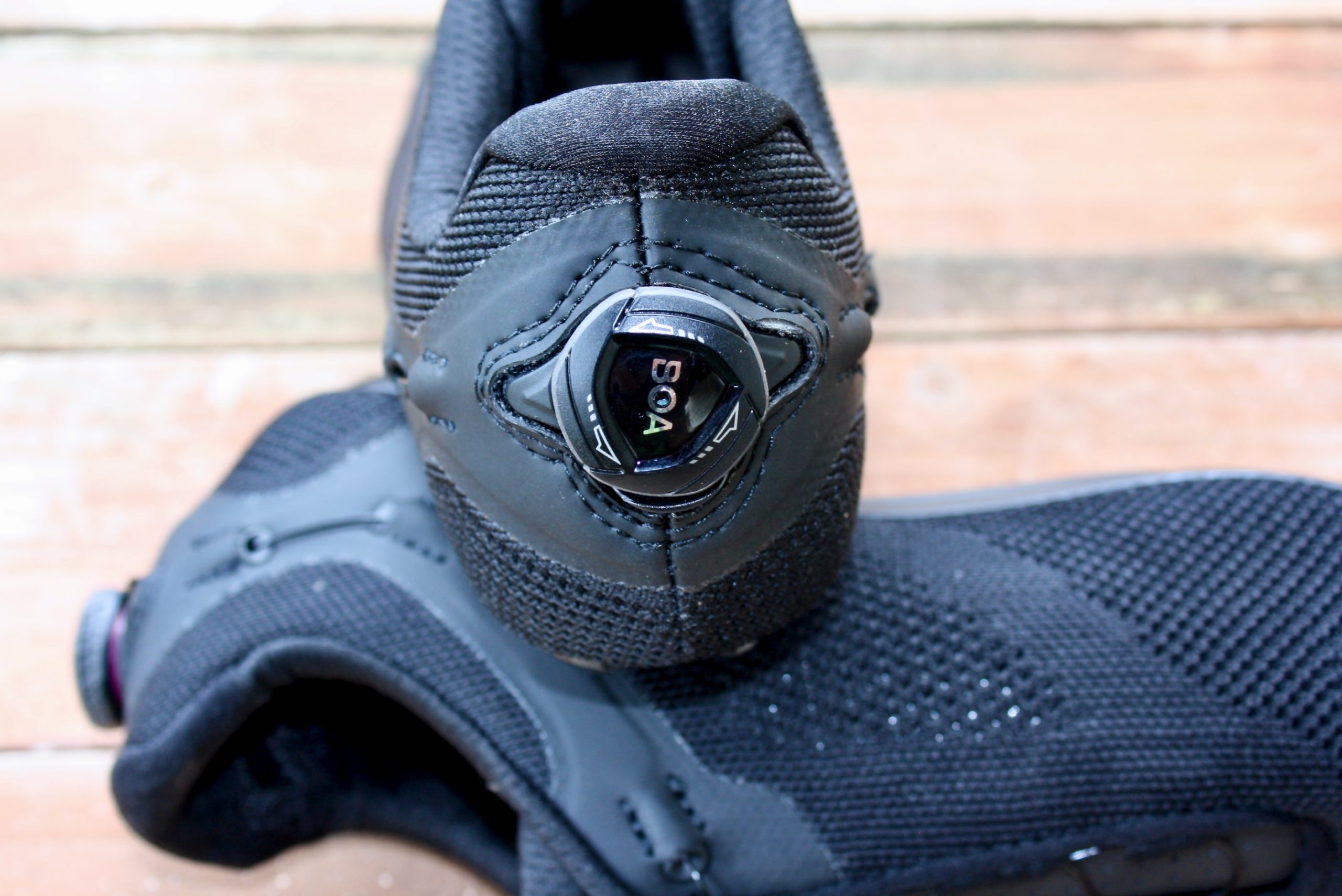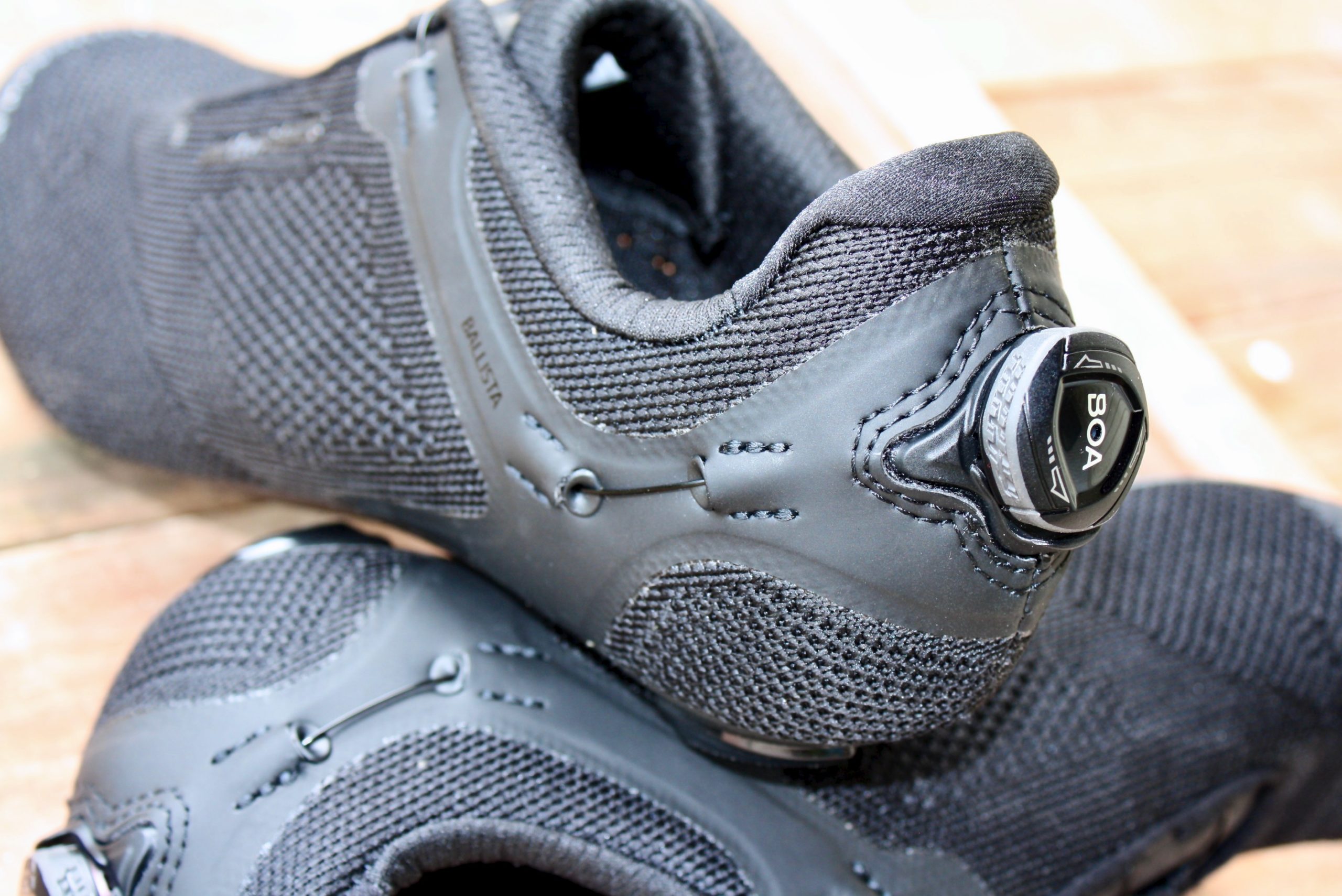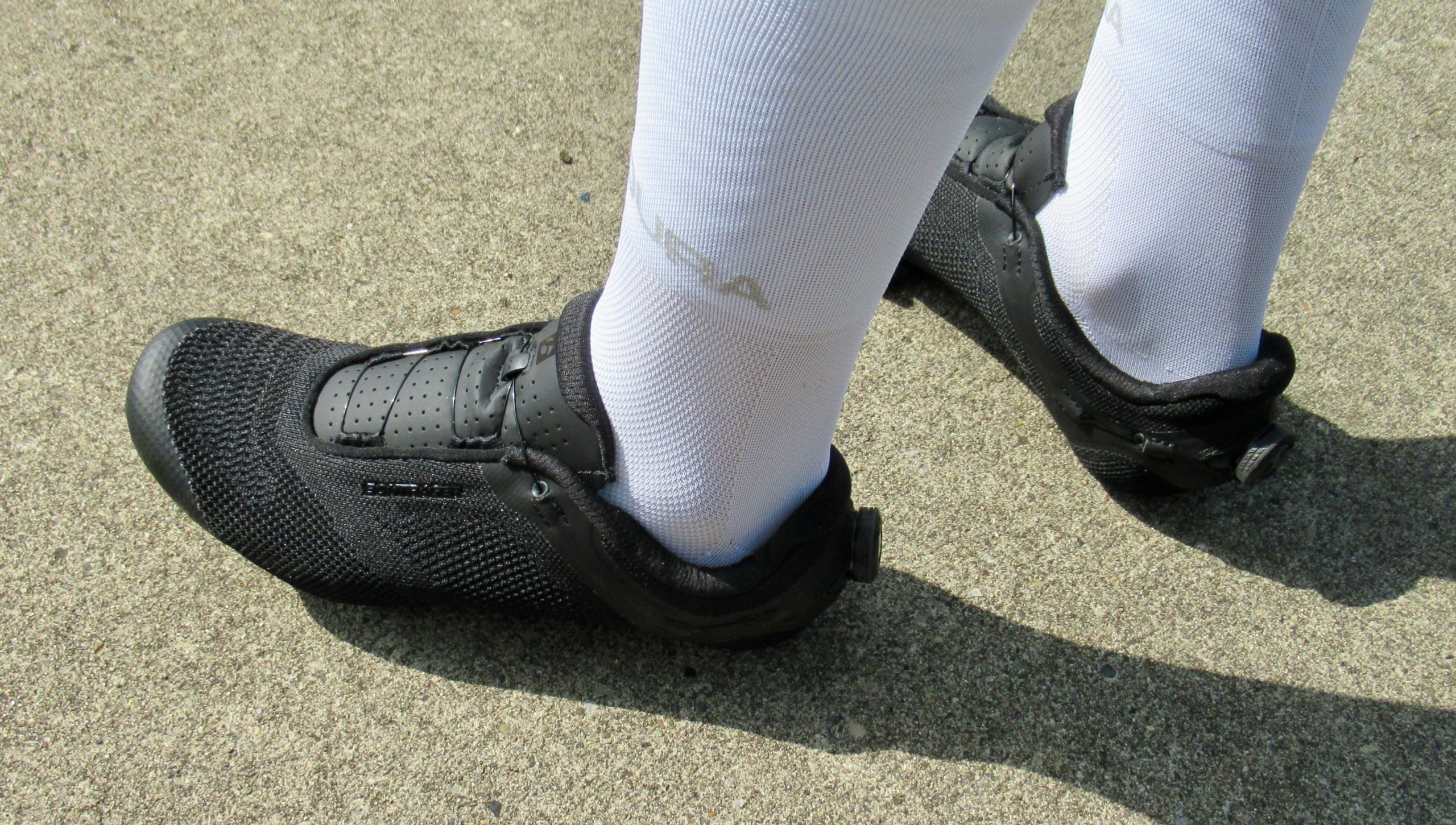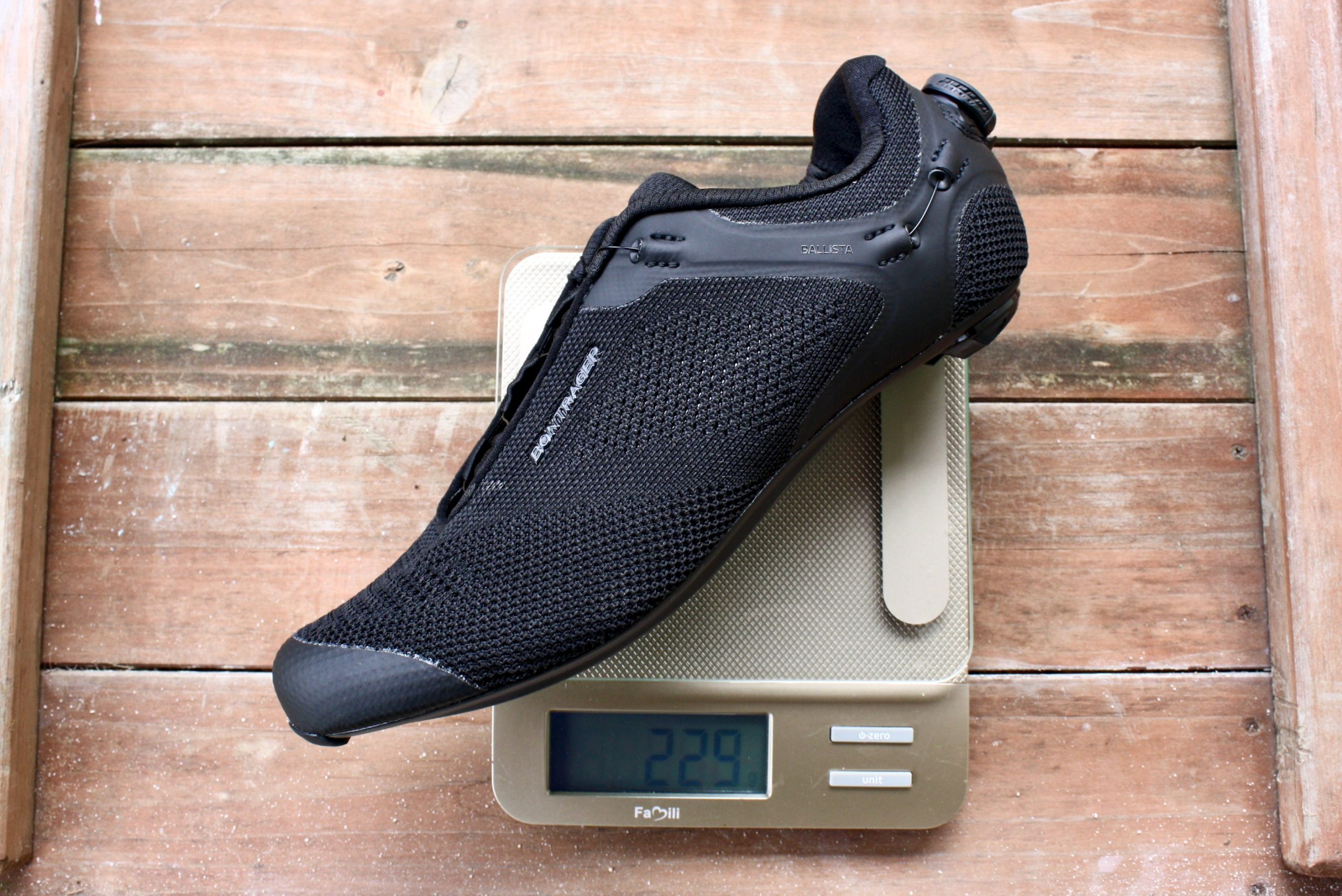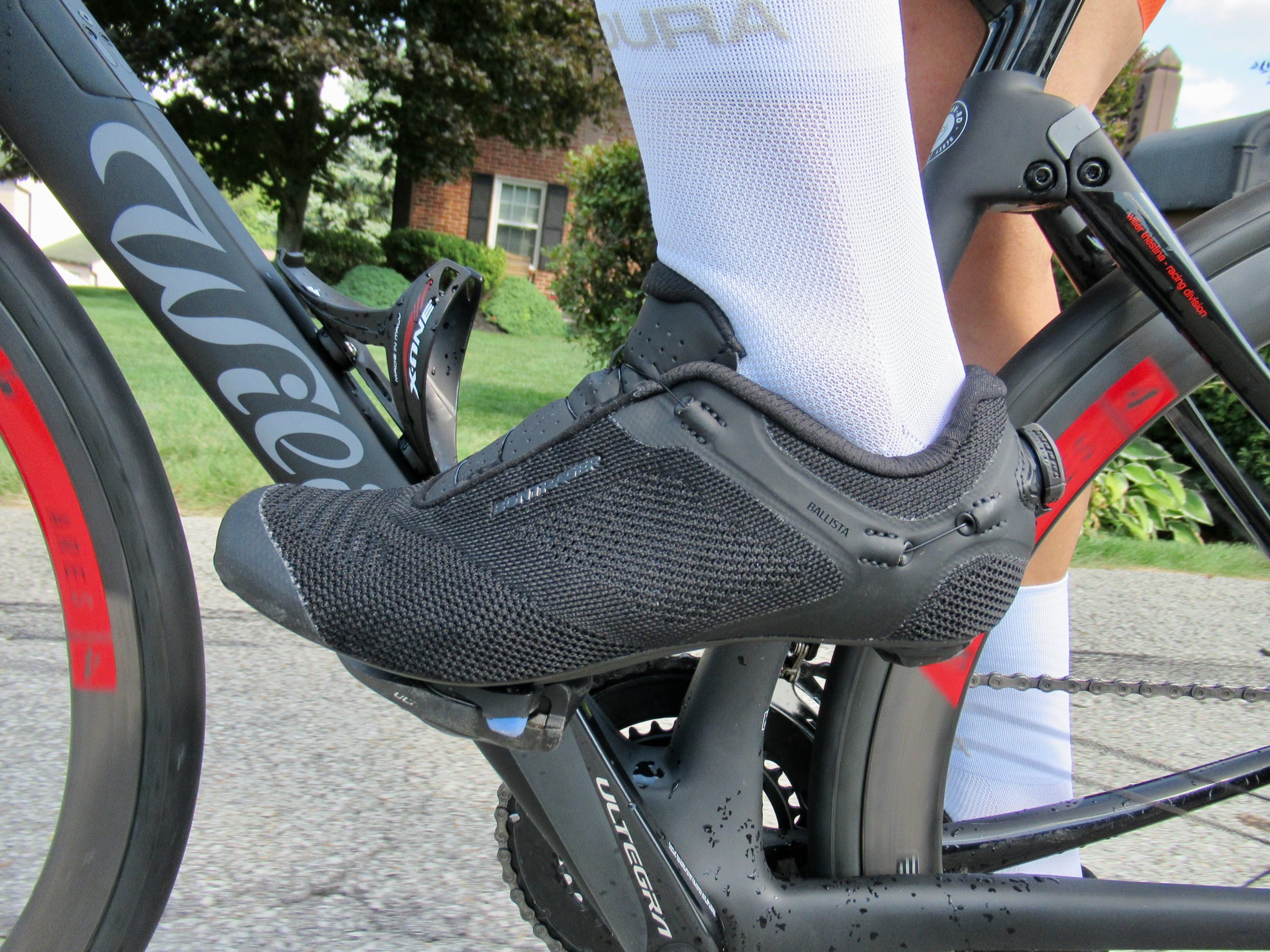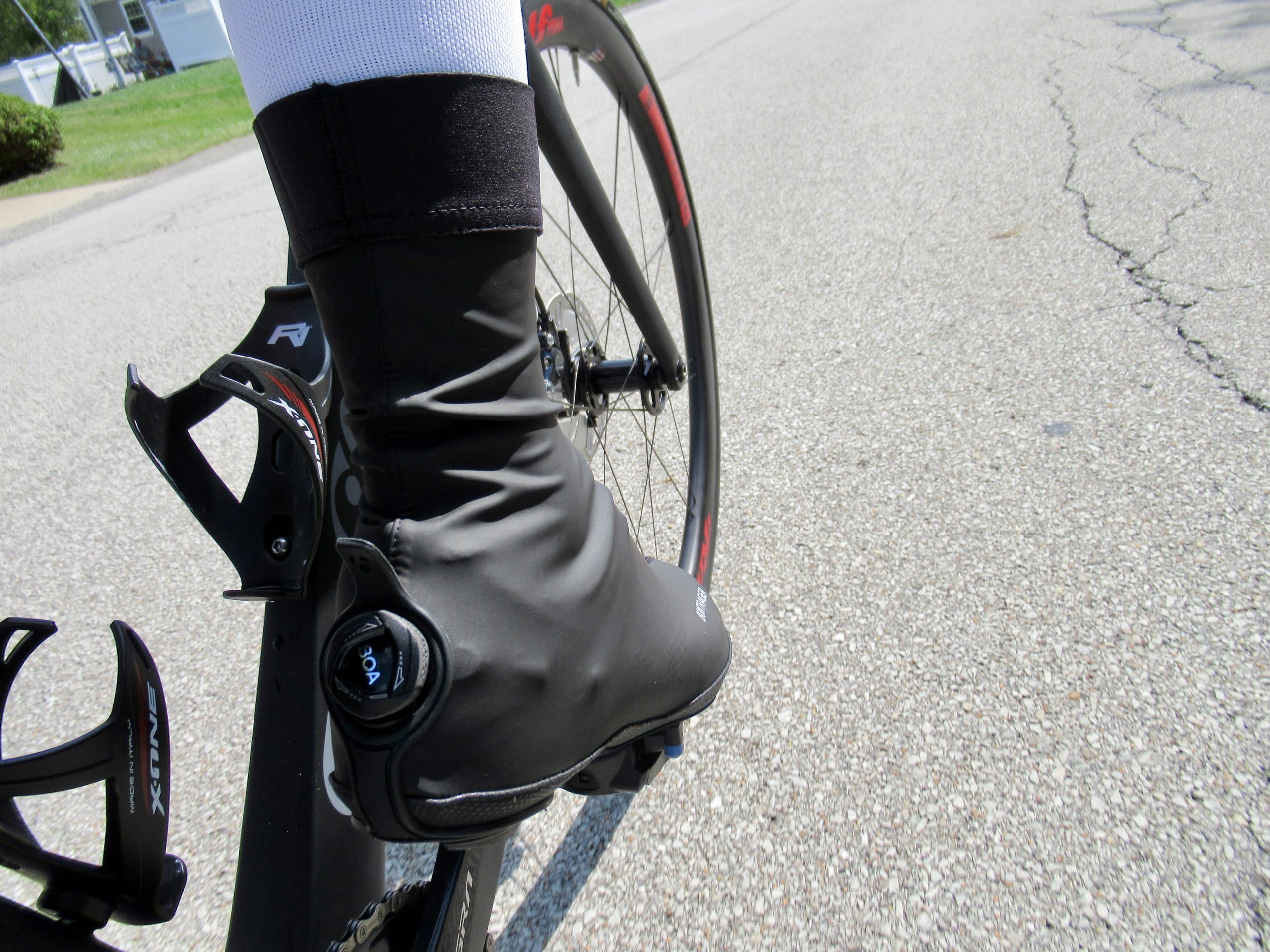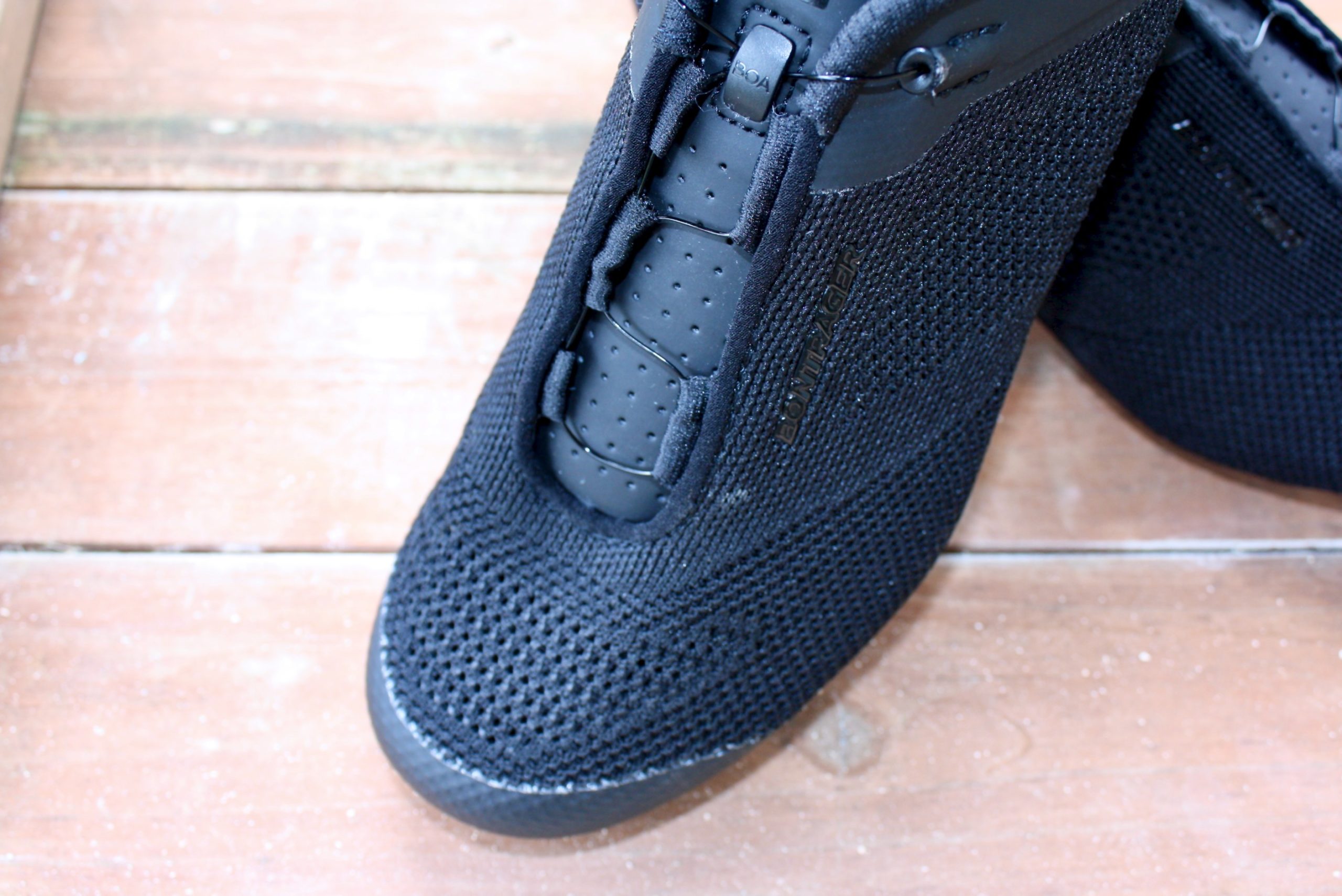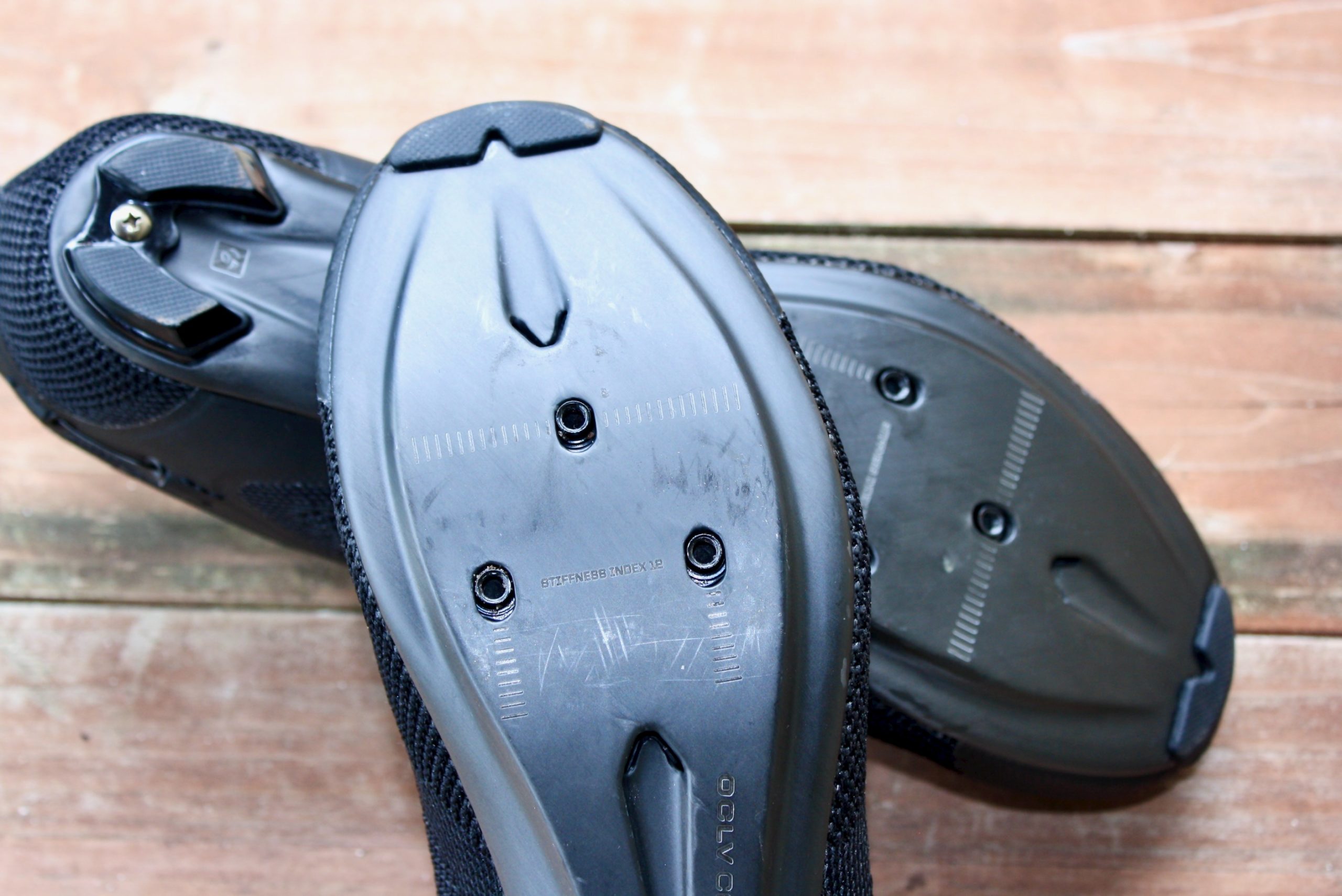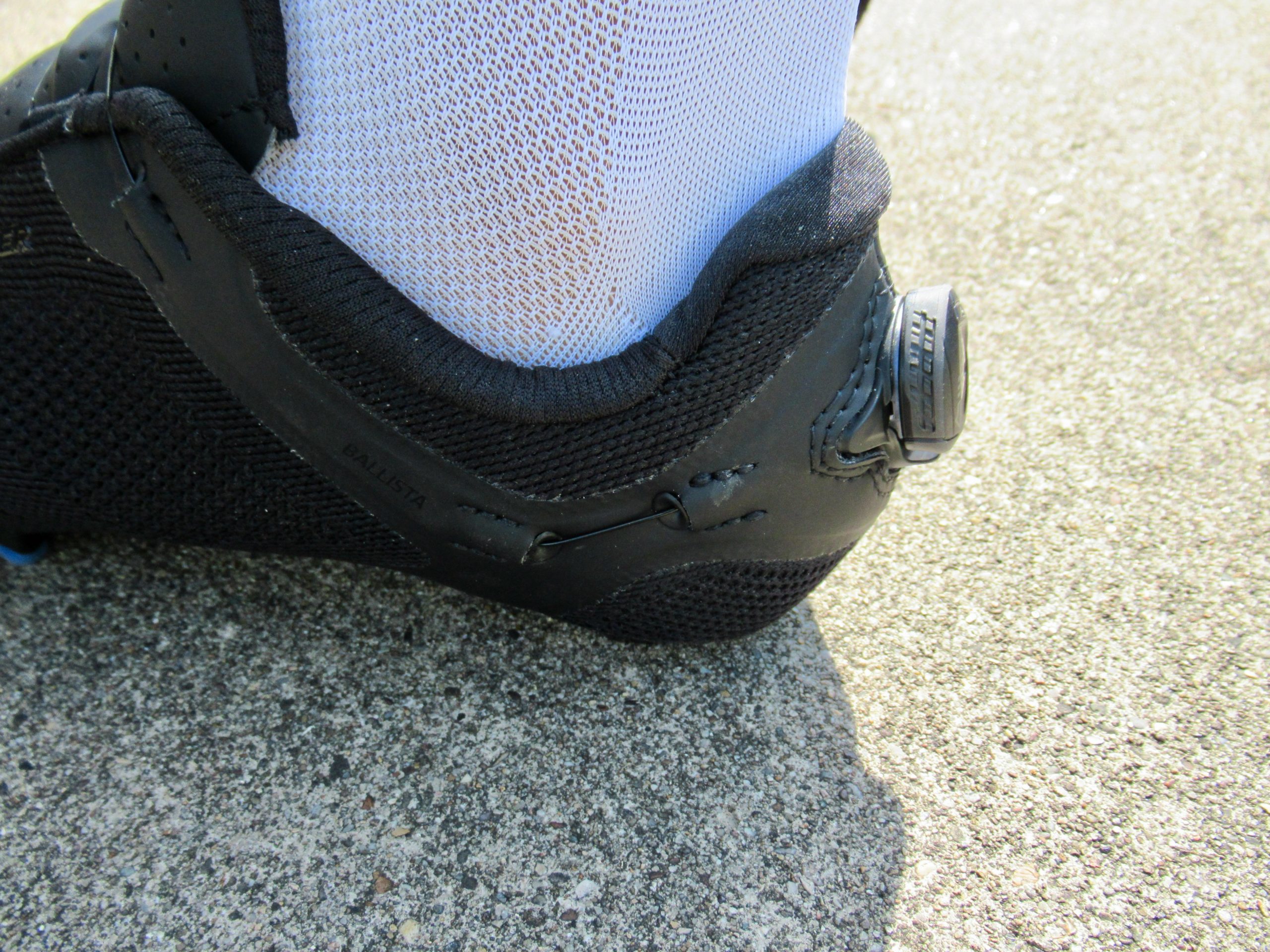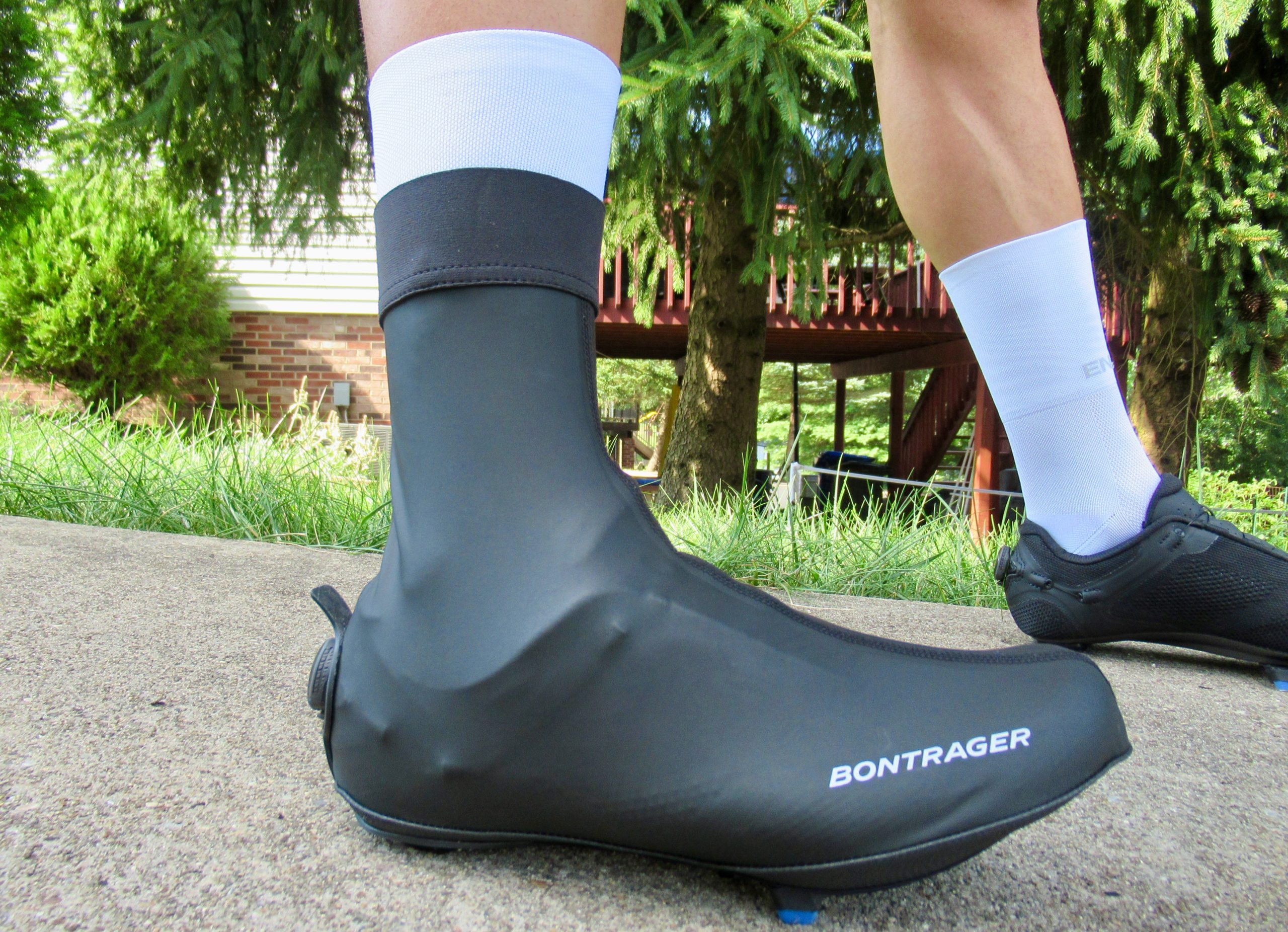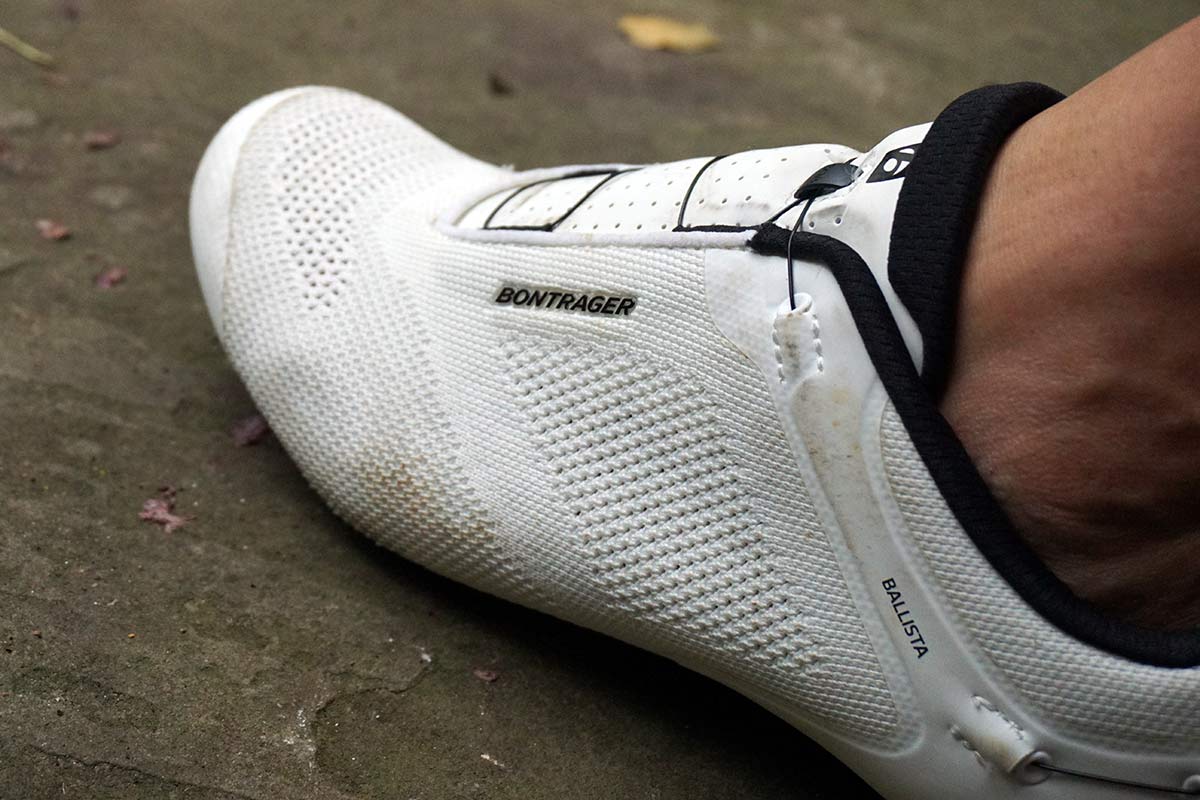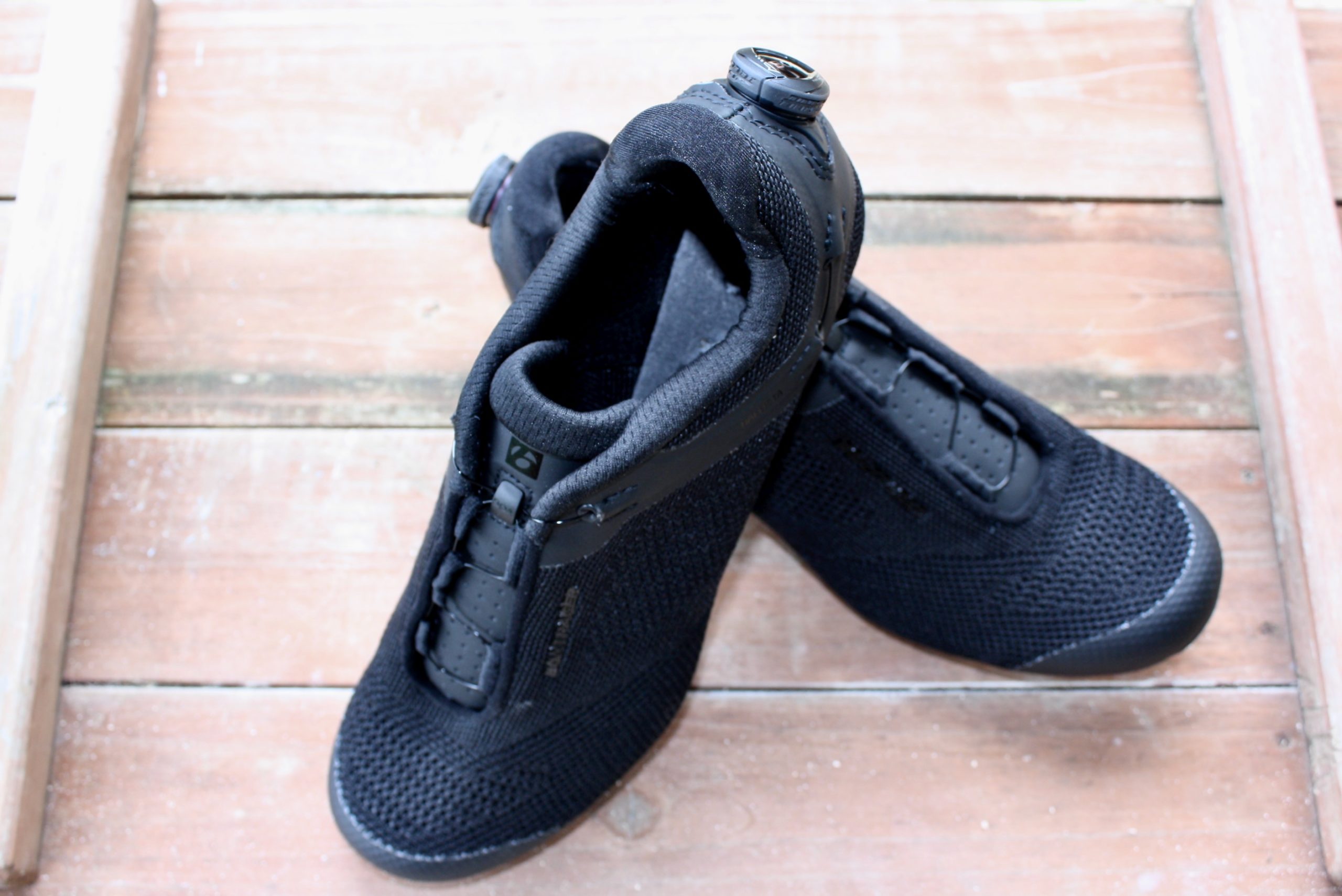Knit shoes are becoming a frequent sight on group rides as overall look and comfort outweigh uber stiff soles or welterweight construction. The allure of knit construction is very similar to that of the lace up cycling shoe.
Bontrager’s motivation for offering a knit version of their original Ballista includes better fit and breathability, and the knit Ballista provides a very different, much better experience than the classic version.
Construction
The idea of the Ballista is still the same, created using the same last as the original, and the same OCLV Carbon Sole (Stiffness index 12 out of 14). What differs is the construction materials and the overall comfort level of the shoe.
The Ballista has a different design, taking the tightening feature of the shoe and moving it to the heel that Bontrager calls the Heel Reel. The unique lacing snakes through a slotted section around the lower ankle and joins at the heel, giving the shoe a sleek look and secure fit. The dial is a BOA IP1 and offers enough pull for a precise fit while providing a two-way knob for adjustments.
Transitioning from the standard Ballista to the Knit version, the heel retention and the functionality of the Boa Heel Reel are much better. The original’s synthetic leather seemed to hinder the functionality of the Heel Reel system.
In the prior version of the shoe, I could never achieve a stable fit in the heel, no matter the force on the BOA, and overtightening the shoe leads to hot spots and more discomfort. This one’s Knit proved much better in this regard.
Another advantage to the knit fabric over the conventional synthetic leather used in other footwear is that the toe box is roomier and allows for a wider foot to feel at home in the narrow last. The overall shape is identical to the regular Ballista, but the knit construction allows for expansion and support for the foot.
Many knit shoes employ polyurethane laminate sheets to add structure and protect high-risk areas from abrasions. Bontrager uses small patches of this, but otherwise relies on different knit patterns and density to get the desired structure without reducing ventilation.
This mostly-knit outer gives the shoes a stylish look, with only a few structured spots to protect the toe and give the BOA’s cable stronger paths to noodle through.
The DWR (Durable Water Repellent) treated knit fabric gives the shoe an almost shiny luster in the sunlight. Juxtaposed with the laminate’s matte finish, it creates a classic yet fresh look.
Weight and price
The actual weight for my pair of size 42.5 is 460g for the pair (no cleats). The Ballista Knit retails for $325, a bit more than the original version ($275.00). Bontrager offers the Ballista Knit in three solid colors: Black (tested), White, and Hi-Viz yellow.
The Ride
Bontrager shoes usually fit me well. Sometimes I’ll get a hot spot or two in the shakeout period, but nothing too bad. I have a bit of a wide foot, and sometimes the shoe just doesn’t work, this happened in my original attempt with the Ballista shoes. The new knit version, on the other hand, is a totally different experience.
The shoe has much more room in the toe box so I can actually wiggle my toes – something that I’ve never done in Bontrager footwear. The knit fabric expands, supporting the foot instead of binding it like other fabrics, giving the feel of an already broken-in shoe.
The Boa IP1 Heel Reel is something that I never really loved, but it works much better in the shoe’s knit structure. My instinct to tighten my shoes was thrown off with the Boa knob in the rear. If you turn the Boa in the opposite direction it can pop open easily, leaving the rider to scramble to tighten their shoes. Those looking to give their shoes a pre-sprint snug before the coffee prime at your local race – be warned.
The original Bontrager insoles offer very little support, though I imagine they figure most will replace with custom insoles. As of recently, I’ve fallen in love with the Ergon insoles, so they quickly replaced the stock version in the Ballistas.
The Boa Heel Reel is much better at foot retention than the previous version, but I still get some warm spots (not blazing hot) on the sole. I’ve alleviated this by a basic loosen/tighten of one of two enclosure systems in other versions of footwear, but this is something that the Heel Reel can not perform as well.
On the road, airflow is bountiful in the Knit Ballista. The ethos of a Knit shoe is to allow for more free airflow and range of movement – the Ballista checks those boxes easily. But it can be a bit much on crisp Pittsburgh dawn patrol rides, so the included shoe covers are a nice touch.
The shoe covers are not too warm but offer substantial water protection and are explicitly designed for Ballista shoes. The smart covers have a tight-fitting space in the back for the Boa dial to peak out for on-the-fly rainy day adjustments. For a $325 pair of kicks, it’s nice to know you can keep them looking and feeling fresh as the seasons change.
BTW, the shoe covers’ construction is excellent. They don’t sell this particular one aftermarket, but their standard version is identical sans the rear BOA port and will fit any regular cycling shoe. They also sell replacement heel treads ($20/pair), but not toe treads.
The OCLV carbon sole is stiff and offers excellent power transfer. Bontrager rates the stiffness of the Ballistas sole as 12 out of a possible 14. Having ridden both Ballista versions and the most recent Bontrager XXX shoes – the stiffness is notably less than the XXX but much more comfortable with fewer hot spots. The sole adds to the Ballista’s airflow features, with a full channeled vent that enters through the cleat mount and exits after.
Torsional stiffness is plenty in the Ballista, and not a bit flimsy feeling like some knit shoes I’ve ridden over the years. The heel cup is deep (same design as the original Ballista) and built extra sturdy to house the Heel Reel Boa system. The knit fabric’s functionality allows the riders foot to sink deeply into the cup and take advantage of the shark tooth grippy material.
Tyler’s take
Mostly, I agree with Jordan’s review, in particular:
- Very comfortable toe box, and good fit. I’ve generally liked Bontrager’s shoes over the past five years and these maintain their reputation.
- Mesh upper is suprisingly supportive. There’s little to no stretch, and they’ve held their shape over many hundreds of miles, all while keeping my foot securely where it should be.
- Mesh is also cooler and far more breathable. I rode these on consecutive 4-6 hour days in 90-103ºF heat and never had hot spots or over heated feet. They’re great for hot weather.
- That rear BOA dial is clever, and solves some problems, but like Jordan, I could easily knock it loose when trying to adjust on the bike. And that’s where the rub is…literally:
I can live with the dial’s placement and function. My only complaint with the shoes is the path that BOA cable takes around the instep. With the stock insoles, it tightens directly across my ankle bone, rubbing it nearly raw.

I usually move Bontrager’s excellent Superfeet #3 insoles between pairs of shoes, and these apparently lifted by arch and ankle high enough above the BOA-induced ridge for most of my rides. It wasn’t until I forgot them (for a three day ride to the beach, naturally) that I realized just how much that cable routing dug into my ankle.
If you love the idea of these shoes, and can tolerate additional arch support, consider their Blue version a simple fix to making these 100% comfortable.
I do love me some white cycling shoes, but I knew these would get dirty. They’ve surprised me by not getting more dirty, but there’s pretty much no way to keep them perfectly clean.
While the rain bootie certainly doesn’t make this a winter shoe, the ability to adjust the shoe’s fit while its in a rain cover is brilliant…and something that would be good to have on other shoe/bootie combos if they can fix the cable routing to avoid pressure points.
Final thoughts
Shoes are a personal purchase, and the fancy carbon race shoes you lust after may not fit your specific foot shape. The Ballista Knit conforms around the foot allowing for a much better fit in a seemingly narrow last. I noticed the fit getting better and better at each ride – though I believe that riding in a terrible storm helped this.
The only point that didn’t improve was the BOA’s closure and the small hot spots I wasn’t able to alleviate after hours in the saddle. This tightness may be due to my wide foot, but I’ve remedied it on other shoes with adjusting one of two straps or velcro enclosures.
If you could sum the Ballista Knit up in a few words, it would be “out of the box broken in.” They are not an all-out performance shoe that will transfer every twitch to power, but you can spend a long time on your bike without hot feet. For me, that outweighs the performance level in some aspects, because how hard can you go if your feet aren’t happy?
Learn more at Bontrager.com.
Disclosure: Some of these links are affiliate links that may earn a small commission for Bikerumor if you click on them and buy something. This helps support our work here without costing you anything extra. You can learn more about how we make money here. Thanks!
